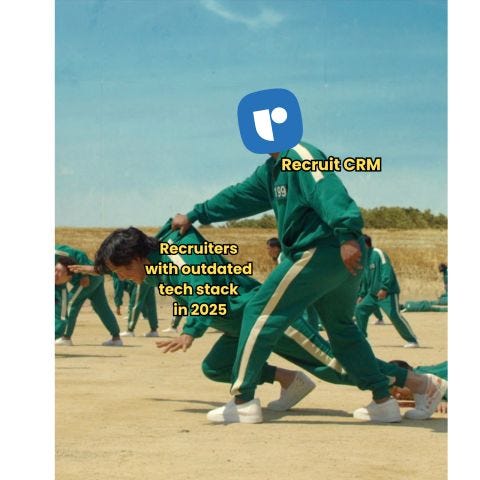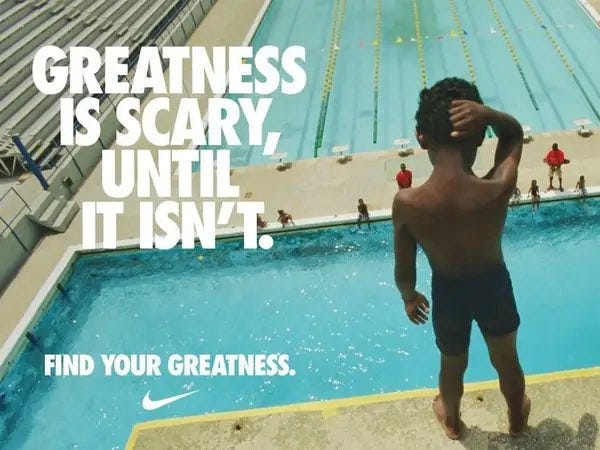You are not the hero
Knowing our role in the hero's (buyer's) journey
This isn’t a hit piece on a competitor of ours.
This is a jumping off point on a mistake I see too many B2B organizations make when it comes to their marketing.
Your product/service is not the hero.
The end user is.
Internalize that, and everything changes.
Sponsor: HockeyStack
Your CEO just slacked you: "We have our board meeting in 2 days. Send me a slide with what's working + anything they need to know."
Did your palms get sweaty reading that?
Or is this an easy ask because you can easily get to this info already?
I'm neurotic about forecasting + tracking performance. I have reports upon reports and dashboards upon dashboards.
So when Emir over at HockeyStack asked me what my perfect dashboard would look like, I immediately started geeking out. And when they sent this dashboard mock-up back to me, I was in nerd heaven 🙌
2025 is underway. And it's also never too late to add some solid reports or views to your dashboard, so hopefully this provides some inspiration to any of you who are looking to level up your dashboarding game.
Background
At the core, human beings are inherently selfish by nature. Self-preservation + survival form the foundational level in our hierarchy of needs.
This means it’s natural for many of us, and the entities we are a part of, to default to putting ourselves or our company “in the center of the world.”
AKA, the hero of our own story.
But what happens when our story intersects with someone else’s? The world can’t possibly revolve around two different points. Something has to give. Only one hero can be the center of the story.
And this is exactly where I see too many companies choose the wrong “hero” to focus on with their messaging.
What not to do
Do not make yourself or your company the hero.
Full stop.
Want to know what directly telling the market you’re attempting to sell to that what they’re doing is wrong, outdated, ineffective, lazy, etc. does for you? It makes them self-conscious. It makes them uncomfortable. And it associates you with that feeling.
Worse yet, when you go on to say that not only is what they’re doing wrong/outdated/etc., but that YOU are going to be the one to save them from this hole they’ve dug themselves in - well, despite good intentions, it makes them feel helpless and unintelligent that they can’t fix it themselves.
Here’s a recent example of what that looks when a company positions themselves as the hero of the story to their audience.
Put yourself in the shoes of a recruiter here. How does this image make you feel? What message is it telling you?
Now think about if this is something you’re doing with your messaging.
When it’s done right
Now that we’ve seen what this concept looks like when it’s done poorly, let’s look at what it looks like when it’s done well.
Surprisingly (unsurprisingly?), it’s much harder to do. Going this route means being empathetic to your market. It means having to craft an actual narrative. It means having to craft an actual narrative that your market can relate to. And more often than not, it means having to craft an actual narrative that your market can relate to and isn’t direct-response oriented.
So not only is this harder to create, but it’s also harder to put a future ROI to because by nature it’s not going to be easily “attributable.” It’ll be a force multiplier on everything else you have going on, but likely won’t show up on many first/last-touch attribution reports. It’ll be something memorable that your audience sees and then types in a quick Google search for your company name to learn more about you.
But it’s so so so so SO much more fulfilling work. And the long-tail of it is longgggggg when it’s done right.
So without further ado, here’s my all-time favorite ad campaign that absolutely hits this nail on the head.
Nike’s “Find Your Greatness” campaign
Zero.
That’s the number of times this commercial audibly says the name of the company behind the message.
It’s not until the final 2 seconds in this 62-second video that there’s even a reference to the company behind it as their logo appears on the screen.
And even then, it’s just the logo, no company name. But above the logo is the message.
Short. Simple. Memorable. Powerful. Emotional.
FIND YOUR GREATNESS
That’s what Nike wants you to take away from the message. That’s what Nike wants you to associate them with in your mind.
You can see yourself in the kid running down the road. It’s a lonely road, no one around for miles. It’s twilight, so he’s either up early or getting this in after a full day. And it’s quiet - just him, his thoughts, his desires, and his aspirations for greatness.
In this campaign, the hero of the story isn’t Nike. It’s the individual. The kid running down the road working towards his form of greatness. The kid on the highest platform at the pool getting ready to make his first jump from it.
They aren’t even wearing Nike attire in the creatives. These aren’t about Nike. They’re about what Nike represents. They’re about what Nike makes their customers feel or aspire to be a part of as the market sees Nike represents the guide on all of these journeys.
If Nike was the hero, they would be saying people are working out wrong, they aren’t using the right apparel, that if only they used Nike products and coaches, that they’d finally achieve this greatness that they’re after.
But they realize that’s only going to alienate the very people they want to sell to. So they make those individuals the hero.
They dismantle the idea that greatness is only reserved for the very few prodigies and superstars we see. That the 99% of us who aren’t operating at that level can only grab a seat from the sidelines and admire them, never having this for ourselves.
No, they say it’s not rare. It’s not precious. It’s not unique or reserved for a select few. It’s available and within every single one of us. And it’s something they want to help us cultivate.
THAT is how you craft a narrative. And I would be willing to bet that if you looked at Nike’s overall sales the months/quarters following when that campaign went out to the mass market, that there was a statistically significant lift when comparing the before/after.
Book quote of the week
Relevant to the newsletter topic this week, here are two great reads about the Hero’s Journey (The Hero with a Thousand Faces) and how to apply it within a business context (Building a Story Brand).
“Here is nearly every story you see or hear in a nutshell: A CHARACTER who wants something encounters a PROBLEM before they can get it. At the peak of their despair, a GUIDE steps into their lives, gives them a PLAN, and CALLS THEM TO ACTION. That action helps them avoid FAILURE and ends in a SUCCESS.”
- Building a Story Brand, Donald Miller
In case you missed these this week
See you next Saturday,
Sam







I have spent a ton of time on this. Sooo many retailers. Looking around, understanding market shifts. BigBox retailers DESTROYED mom and pop retailers. And now BigBox retailers are being destroyed in favor of... mom and pop retailers.
Two types of DTC businesses: build to flip, built to serve.
One is purpose driven and that purpose is profit.
The other is mission driven and that mission is profit from things they love and think you will too through service.
The single most difficult part is the storytelling to connect consumers who want to be valued by the people they buy from, with the people who value customers for patronage and profits, not just profits.
Story Concept: Legacy is a different thing for everyone. For some, their legacy is how much money they make. For others, their legacy is how many customers they have served with products they love and made a good living along the way. People are not going to remember or even know the money you make. They are going to know and remember the way you make them feel every time they buy from you. They are going to share their journey with you. They are going to share your journey with others. And they will come back to you time and time again for the service that comes with your products. You get to choose your Legacy. And your customers will help you build it.
I have a half dozen of these noodling around in my head or on paper.
It is VERY hard to do and I have been writing for 40 years.
Good post Sam.